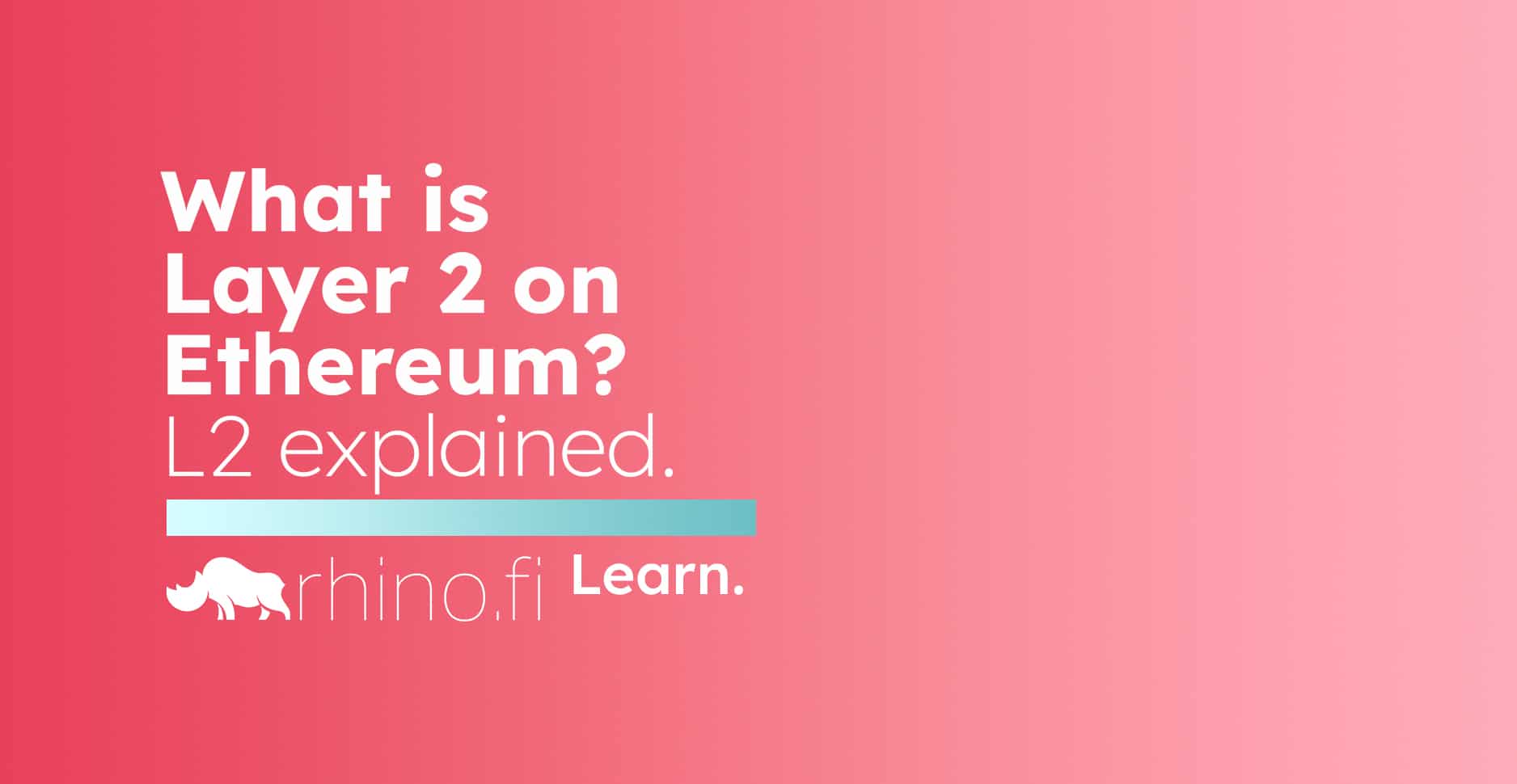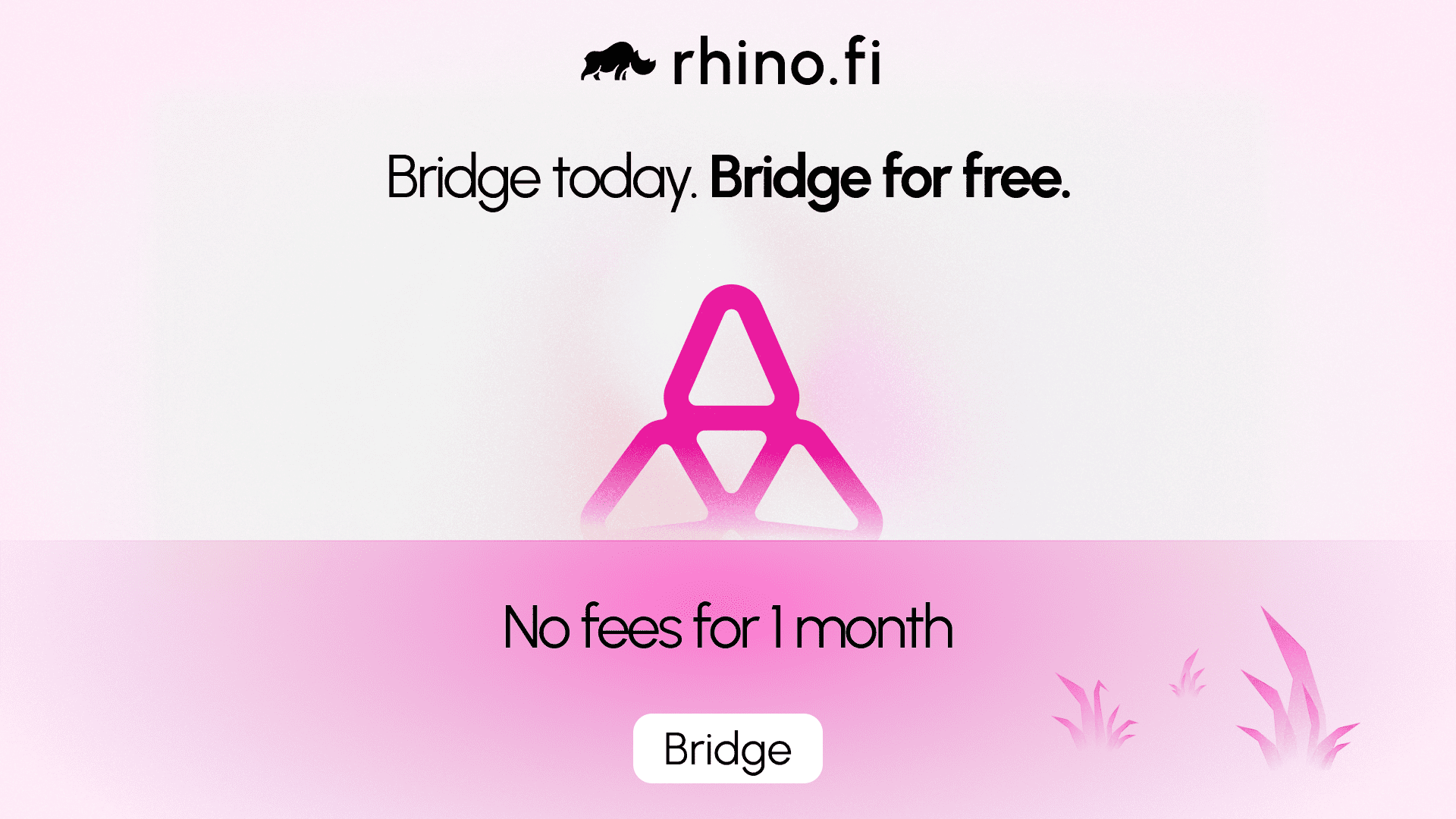Layer 2 is the collective term for a group of crypto projects that have been built as semi-autonomous satellites of the main Ethereum blockchain. The group includes rhino.fi.
These projects, which include both trading platforms and networks of decentralised applications, solve Ethereum’s well-publicised congestion problem by handling many of its everyday transactions off-chain before posting the records back on-chain in batches, which is extremely efficient.
They also improve the overall user experience, because, unlike the main chain, they can settle transactions instantly and without expensive gas fees.
Layer 2 is still a very new concept, so in this blog post we’re going to give you everything you need to understand it.
What is the purpose of layer 2?
Ok, so first we need to consider the strains on the main Ethereum blockchain, or layer 1.
This blockchain was built in 2015, in the wake of bitcoin. But unlike bitcoin, it has a dual purpose: as well as hosting its own currency, Ethereum provides a framework for developers to build decentralised applications.
The project has gone better than anyone could reasonably have expected.
- Ethereum is now the most popular blockchain on the planet, having surpassed Bitcoin.
- Its flagship currency, Ether, is fast approaching bitcoin’s market cap.
- It now hosts over 3,000 decentralised apps, including games, social networks and trading platforms.
But this is placing huge demand on the main Ethereum network, which isn’t built to handle this level of user activity. Hundreds of thousands of people want to use the network every day to trade, buy NFTs, post messages in forums and loads of other stuff.
If you imagine it like a motorway, Ethereum is now in rush hour, every hour. It was only built to handle 15 transactions per second, whereas in reality it needs to be able to handle several thousand.
This means that Ethereum has to charge users for a slice of its computing power. These dreaded ‘gas fees’ can reach hundreds of dollars for a simple transaction, and penalise smaller traders (who have to bid for the computing space against bigger rivals).
How does layer 2 solve these problems?
Layer 2 projects, like rhino.fi, sit on top of the main Ethereum blockchain.
You can think of us as a bit like an annex of Ethereum. Layer 2 projects share some of the features of the main network (notably the security) and are designed to interact with the main chain. Crucially, however, they can also process transactions independently.
Essentially, layer 2 projects split the transaction into two parts: the computation stage (which the layer 2 project performs itself) and the registration stage (which we perform on the main network).
- First, the layer 2 project takes a transaction off the main layer 1 blockchain.
- Then, the layer 2 project crunches the numbers and computes the transaction.
- Finally it posts the data back on layer 1, so the transaction can be verified and posted on the blockchain.
Additionally, layer 2 projects have their own unique ways of proving transactions at top speed. Each project is different, but they all have a common purpose: to remove as many steps as possible without compromising user data or security.
RhinoFi, for example, is part of a group of projects known as rollups. We roll up large groups of transactions and then send a single block of data to the main Ethereum blockchain, representing the entire batch.
Instead of having to verify every single transaction, the main blockchain only has to verify this single block of data, which is way faster.
Do Ethereum’s creators approve of layer 2?
Absolutely. In fact one of the co-founders, Vitalik Buterin, says layer 2 is crucial to Ethereum’s long-term evolution.
By taking huge amounts of transactions off the main blockchain, these projects will enable Ethereum to scale. At the same time, they will provide the fast, low-cost experience that the project was built to provide.
In fact, these benefits are going to expand and increase over the months ahead. With the development of bridges and integrations between projects, users will be able to move their assets from one platform to another, without paying gas fees at any stage.
Layer 2 is allowing Ethereum to reach its full potential. This is what blockchain was meant to be: fast, efficient and cost-effective.
So, to summarise:
- Layer 2 is a network of projects that sit on top of the Ethereum blockchain.
- These projects solve Ethereum’s biggest current challenge: its congestion.
- Layer 2 projects can take transactions off the Ethereum blockchain, process them in bulk and post a single record back to the main chain.
- This means transactions happen far more quickly and users are spared the hefty gas fees they’ve been paying up to now.
If you’ve enjoyed this edition of RhinoLearn, check out our post on rollups. This will enable you to understand rollup technology in more detail and see the innovation that powers rhino.fi.





